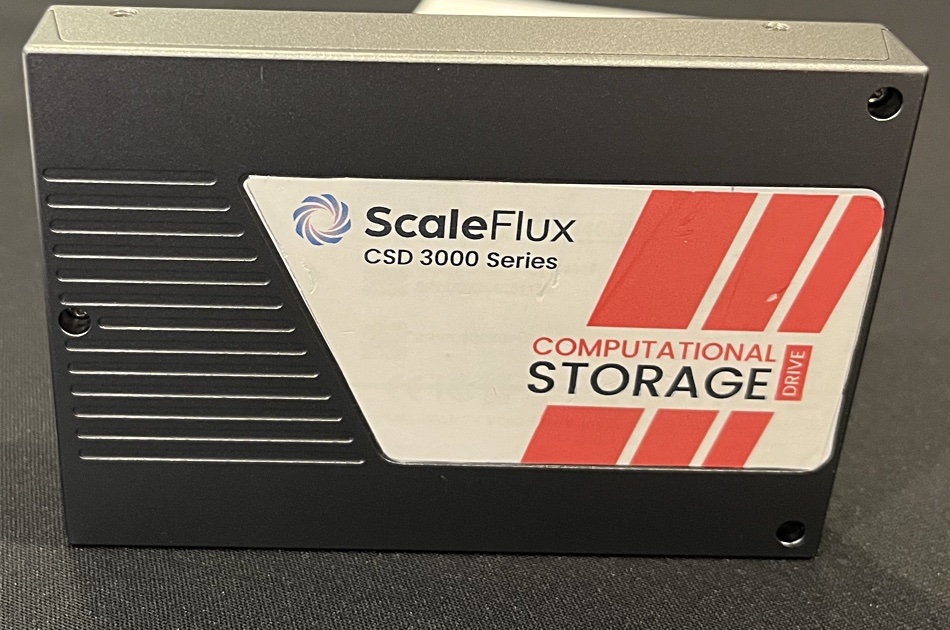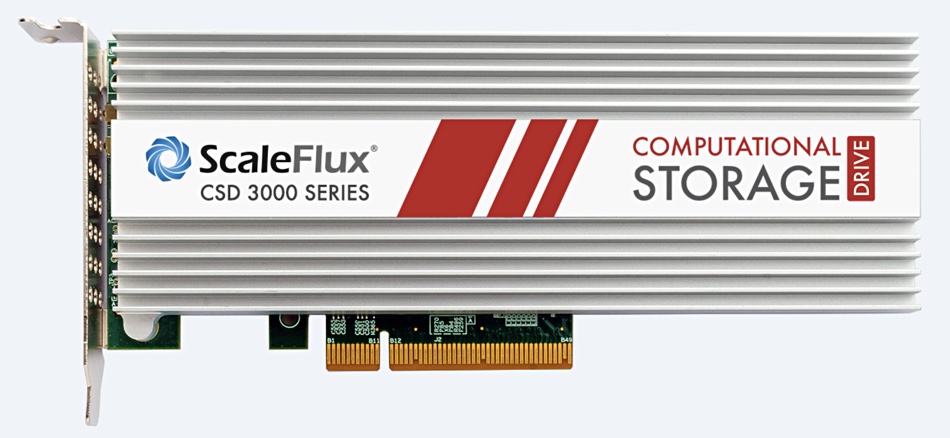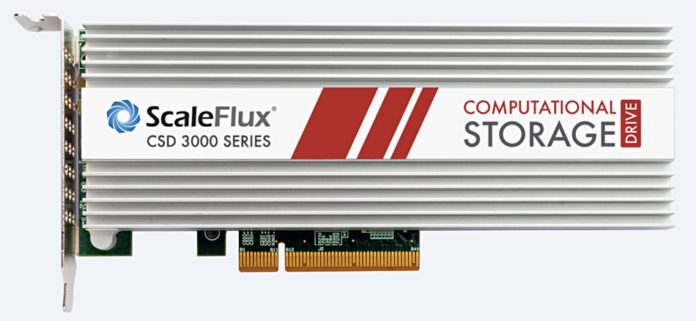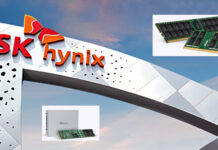Chinese and US computational storage developer ScaleFlux has shown its CSD 3000 at the Flash Memory Summit and launched a channel program.
This is a PCIe 4 SSD with TLC flash, an NVMe interface, and ASIC based around an eight-core Arm processor with various hardware acceleration engines for compression and other storage-related functions. The previous CSD 2000 used an FPGA instead of an ASIC and was PCIe 3-based.
ScaleFlux CEO Hao Zhong told us: “This is a big shift and a huge investment.”

Computational storage offloads a host server processor by carrying out low-level and repetitive storage computations on the drive such as compression, encryption, and erasure coding. This avoids data transfer to and from the host’s DRAM, saving both time and electrical energy. Moving from an FPGA to an ASIC system-on-chip increases performance and decreases cost.
Performance:
- Sequential read – 7.1GB/sec
- Sequential write – 4.1GB/sec
- Random read (4kB) – 1,500,000 IOPS
- Random write (4kB) – 370,000 IOPS
Random write performance is boosted with compressible data up to 700,000 IOPS. A downloadable data sheet provides more details.
There are 4, 8, and 12TB capacity levels on offer with the CSD 3000, beating the 2000’s 4 and 8TB raw capacity limits. The CSD 2000 came in U.2 (2.5-inch) and a half-height, half-length add-in-card (AIC) format, and the newer product adds the E1.S format as well. It also has a capacity multiplier feature in addition to the CSD 2000’s hardware gzip compression, enabling it to reach an up to 4x compression ratio compared to the CSD 2000’s 2x.
There is no video transcoding acceleration, as Zhong explained: “Video transcoding needs an ASIC codec chip and we’re not integrating this at this time.”

The CSD 3000 has an API open to customers and ScaleFlux offers customization services.
We asked about ScaleFlux’s growth, and Zhong said: “We grew pretty strong in the pandemic.” When we mentioned competitor NGD’s difficulties, he said: “You need a very good baseline to make a product that’s enterprise-ready, and it’s costly to develop an enterprise-class baseline.”
ScaleFlux sold its initial CSD 1000 and then the CSD 2000 direct to customers, gaining some 50 CSD 2000 customers. It hopes to pass the 100 mark with the CSD 3000, supplying it to hyperscalers, CSPs, and OEMs, and has launched a channel program to help reach that goal. It is not a retail or consumer product. Eric Pyke was hired as VP business development in March this year along with four other go-to-market execs – one of whom is Marissa Strunk, director of channel sales.
ScaleFlux was founded in 2014 and is funded by SK hynix, Micron, AMD (Xilinx), and others along with financial investors. We think it’s taken in around $59 million in funding, with the latest round in 2021 for an unrevealed amount.








